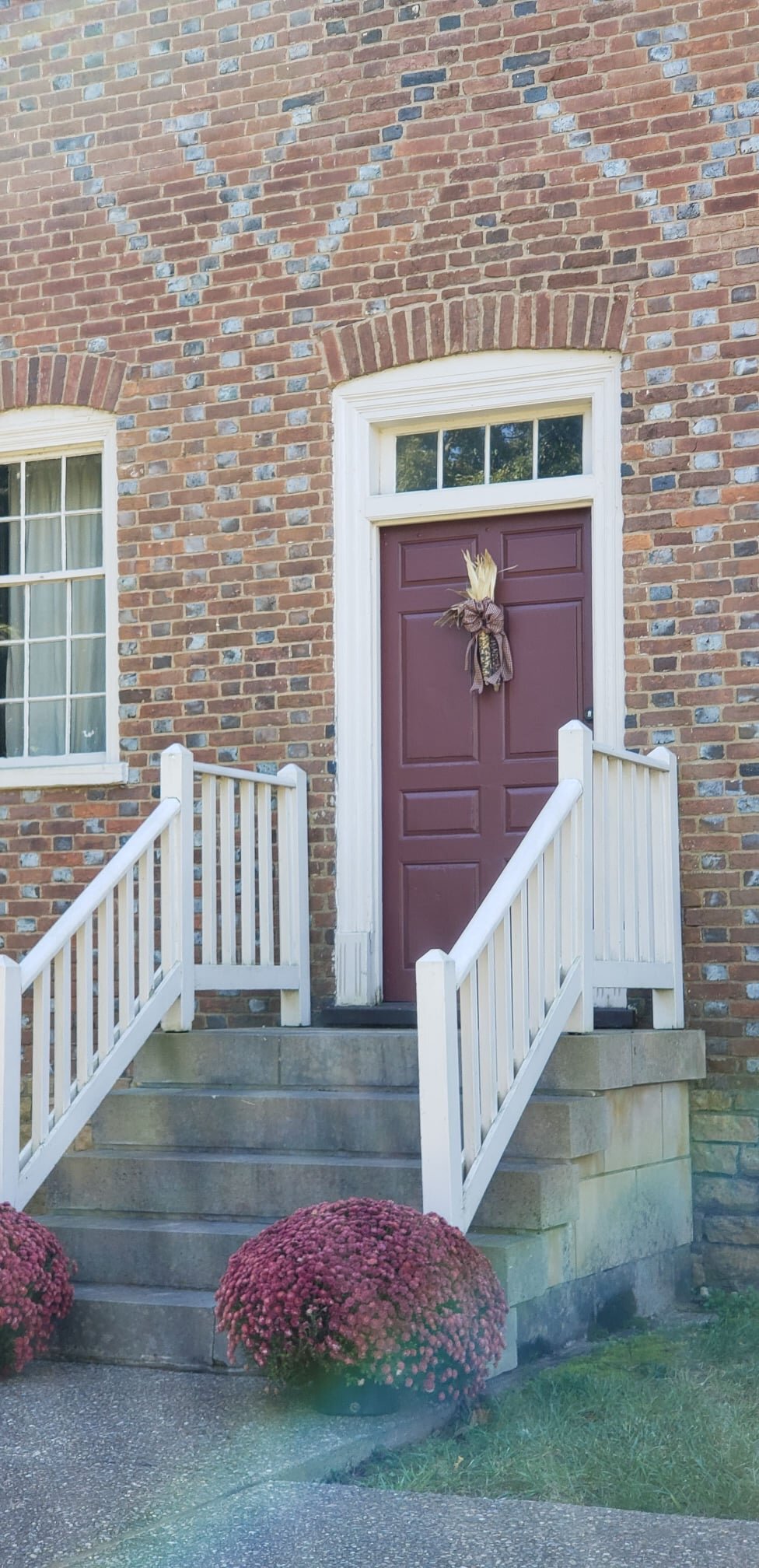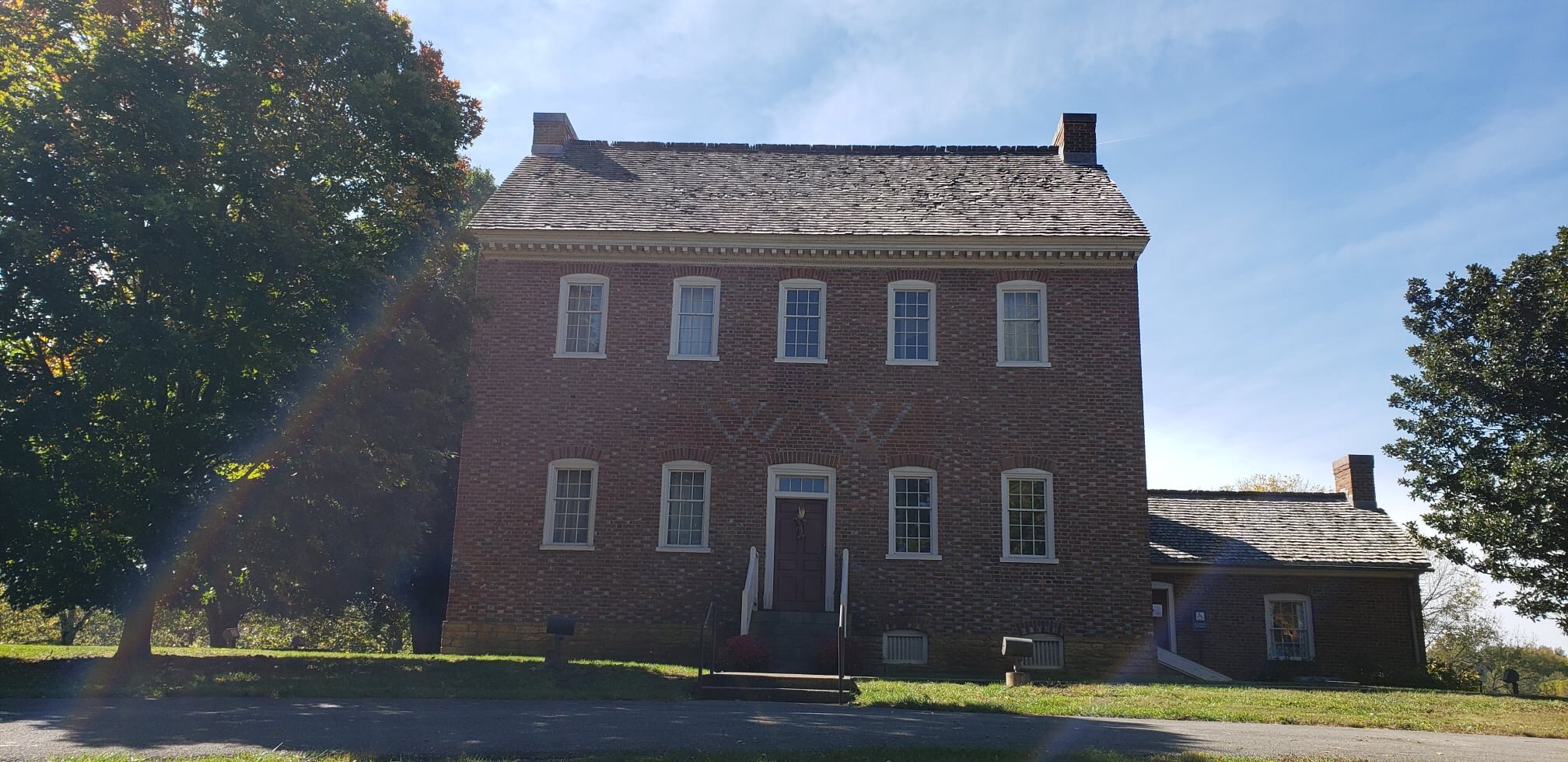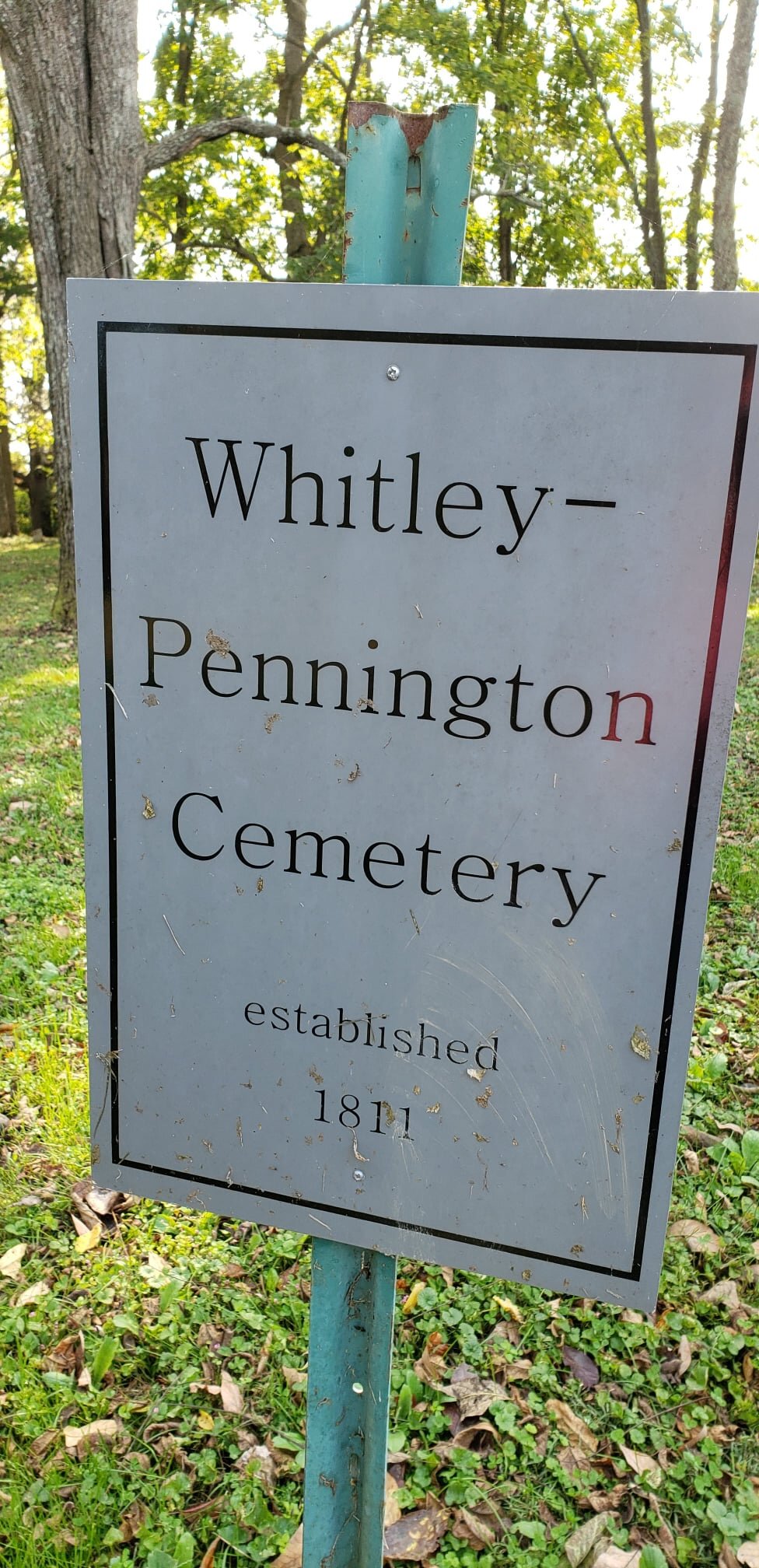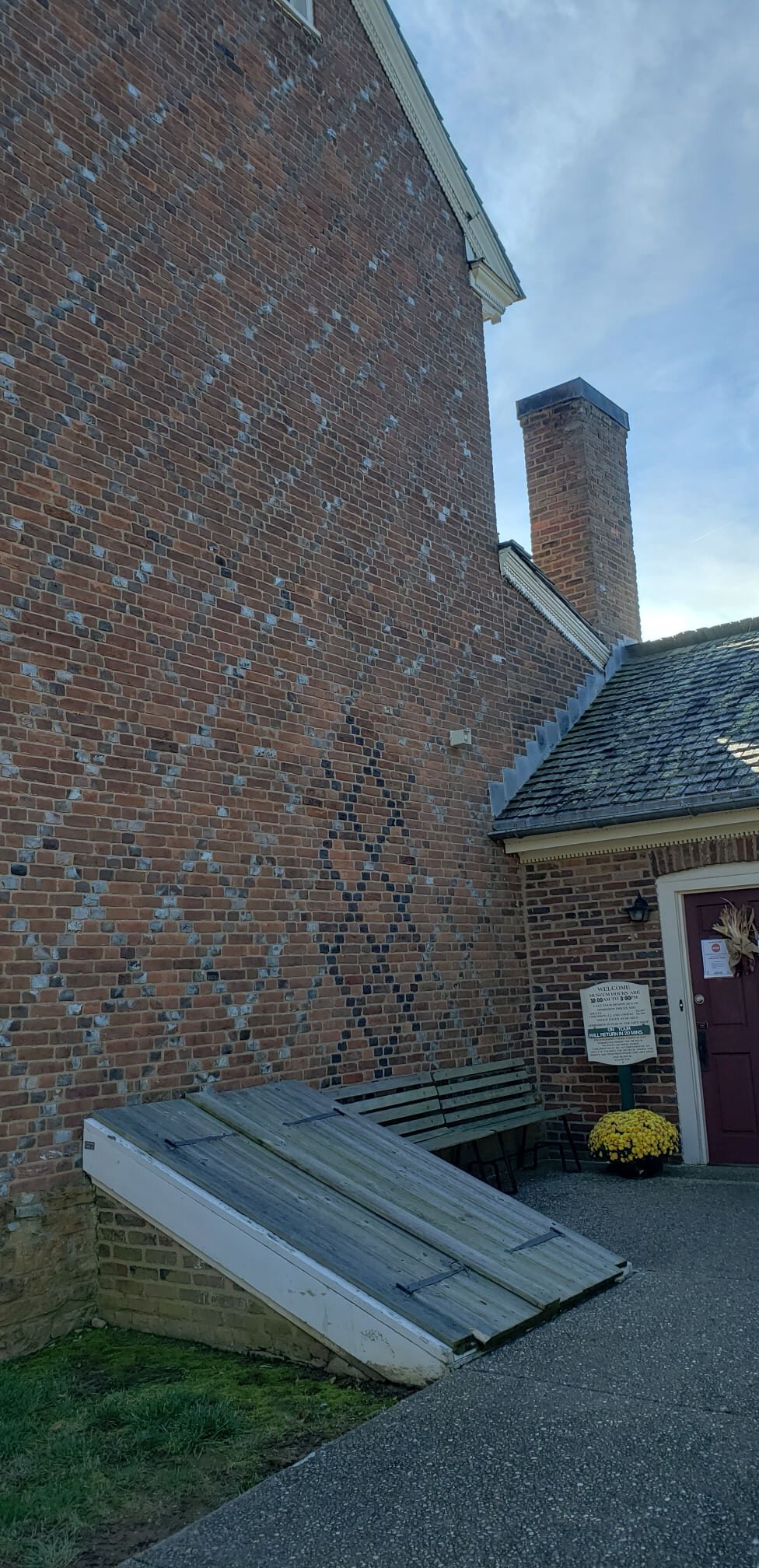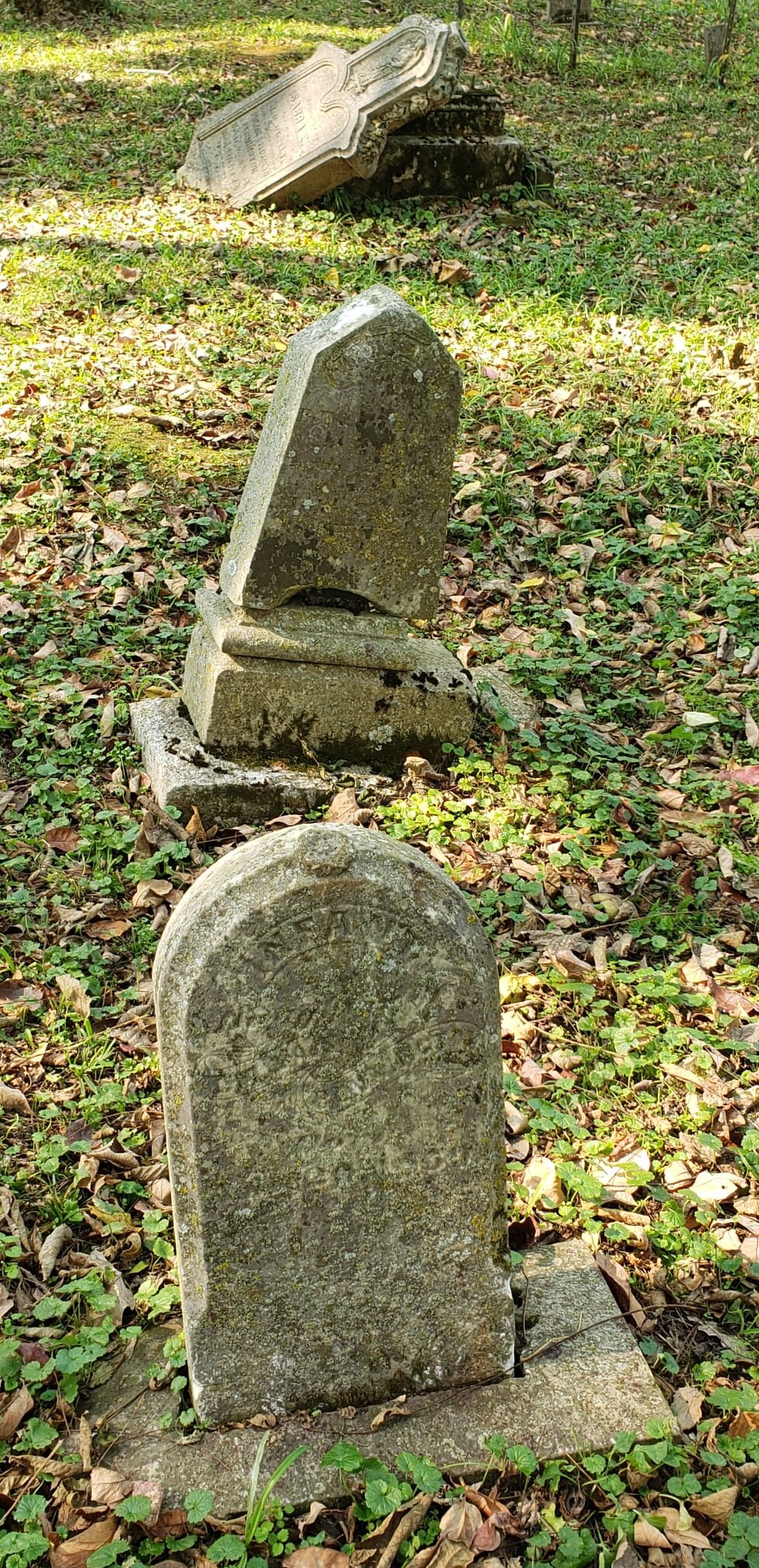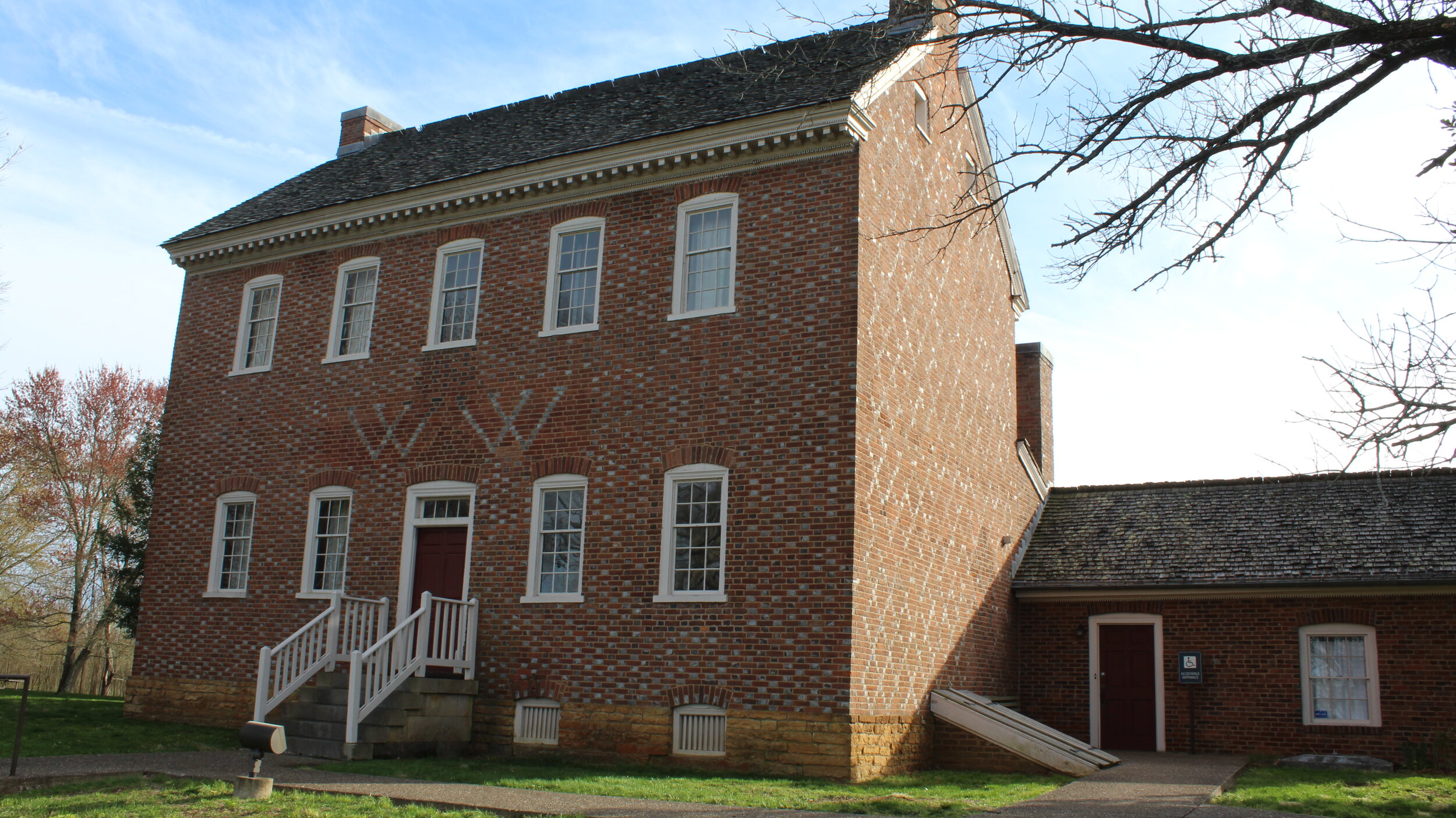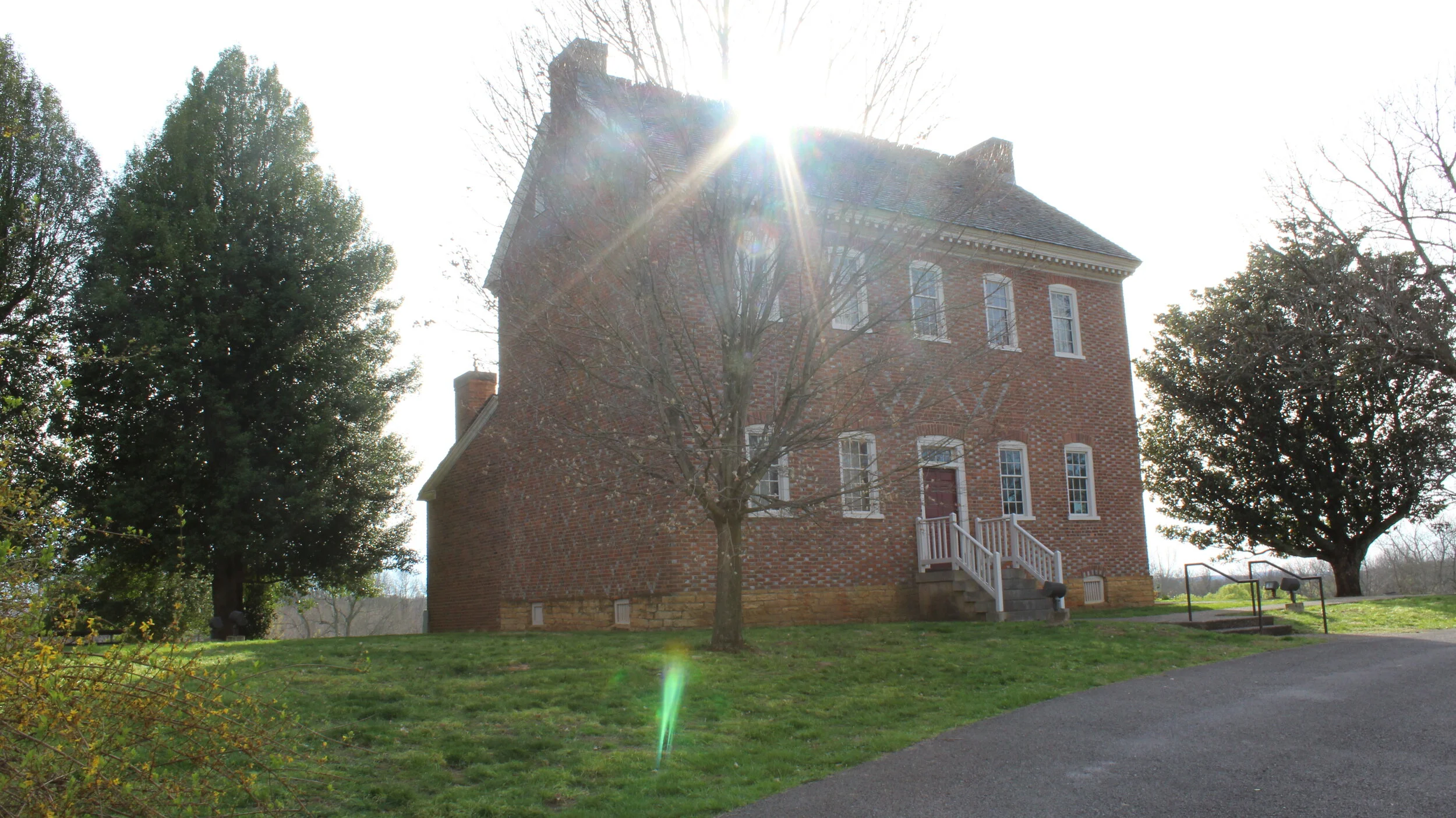Lincoln County
Lincoln County was established on December 17, 1780 becoming one of the first counties of Kentucky. The county was formed out of Kentucky County, Virginia.
County Seat: Stanford
Borders: Boyle, Casey, Rockcastle, Garrard, Pulaski
Incorporated Towns: Stanford, Crab Orchard, Hustonville, McKinney
County Name
Lincoln County is named after the Benjamin Lincoln.
Places of Interest
Fort Logan
In the early days of Kentucky County, the frontier was dotted with stations and forts built to protect settlers from Native American attacks.
Forts, such as Ft. Boonesborough and Ft. Harrod, were larger fortifications usually built around a spring, allowing multiple families to settle in an area. Stations, like Logan's Station, were smaller, safe stops used by settlers while on their way to the larger forts.
Last week, on our adventure to William Whitley Historic Home, we learned of Logan's Station. This station or small fort, was settled by Benjamin Logan and John Floyd, after exploration of the area in 1776. The station (originally names St. Asaph) was erected in 1777 to defend themselves, other settlers and their families, and the area. The location was chosen for its easy access to Buffalo Spring located nearby, and its spot on Wilderness Road.
All roads, with the exception of Boone's Trace, that traveled north into Kentucky County from the Cumberland Gap, passed through Logan's Station. Therefore, many historically famous settlers and their families stopped or even stayed here for a time, including William Whitley and his family.
Many historically important events also occurred at Logan's Station. In May 1777, the station was attacked by British-allied Native Americans during the Revolutionary War. Around September 1778, Logan's Station became the host to the court martial of Daniel Boone, who was accused of treason. He was later acquitted. In October 1779, the Virginia Land Commission opened its first office at Logan's Station. Finally, in March 1781, the Lincoln County (VA) Court was moved to Logan's Station.
The fort stayed in use until 1790. The settlement had expanded by then, and had become known as Stanford. Unfortunately, nothing of the original fort survived.
Today, a community group is working on a replica of the original fort. The fort is far from complete, but your can envision what it will look like when finally finished. If you chose to visit, make sure to add something else to the trip, because this stop is a quick one. There are many other things to see in this historic area of Kentucky. On this day we visited William Whitley Historic Home, Logan's Station, and Isaac Shelby's Cemetery State Site. (See more on this in my next post). Stanford also has other historic sites in its very quaint downtown area. So, make sure to plan your travels ahead of time.
http://www.stanford-lincolncountytourism.com/attractions...
Happy Travels!!!
Contributor: Medina Dean; Kentucky Historic Travels
The William Whitley House
Around 1775, Col. William Whitley (a soldier, pioneer, and sports enthusiast) and his wife Esther crossed the Appalachian Mountains into Kentucky County through the Cumberland Gap. (Prior to this, Whitley had traveled into Kentucky County with George Rogers Clark, in an expedition against Native Americans in the Northwest Territory.) Whitley and his wife continued following Wilderness Road into what is today Stanford, KY. He planted 10 acres of corn on the land he intended to claim for himself and his family, and sent Esther and his 2 little girls on down the road to Logan's Station while work began on their home. (Look for my next post to learn more about Logan's Station.)
Photo provided by Kentucky Historic Travels
It took approximately 9 years to complete their home. All the bricks were fired on the property (the walls are all about 3 bricks thick), and all the wood paneling, floors, and rafters were logged from the property as well. William had bricks set with the ends facing out to create his initials "WW" on the front of the home, and "EW" on the back for his wife. (In 1810, an addition to the back of the home covered her initials.). The home is believed to be the first brick home built west of the Alleghenies.
Once completed, around 1785, Esther and their children moved into the home. Being built just feet from Wilderness Road, the home became known as "Guardian of the Wilderness." Early explorers, and later pioneers, would stop at the home for a rest and news as they traveled. It is believed that historic figures such as Daniel Boone, George Rogers Clark, Isaac Shelby, and Simon Kenton would have been frequent visitors to the Whitley home.
Whitley was promoted to Lieutenant Colonel of the Kentucky militia in 1793, and found himself often away from his home on raids against Native Americans. Esther was left at home to protect and defend herself, her 11 children, and her property. Esther must have been one very brave woman to be left alone on the frontier!
Once inside the home (no interior photographs are allowed), you will see the architectural "precautions" the family put into place to protect themselves from Native American attacks. The fireplace stacks were built into the interior of the home so that the Native Americans could not climb up them, and hidden cubbies were built into the walls to hide their children from attacks. The cubbies were also used to store their weapons and ammunition when not needed.
Also on the tour, you will see the craft of building homes during this time. There is a winter kitchen, and a summer kitchen. The rafters in the 3rd floor attic space are exposed. You can see the broad ax marks showing the time and effort it took to turn round logs into square posts. You can see the notches, wooden pegs, and roman numerals that were carved into the various rafters; a system that helped the early pioneers to assemble them on the ground, only to disassemble and reassemble once up on the 3rd floor. No wonder it took 9 years to build the home! (My daughter and I both thought that this was a Mark Bowe, from "Barnwood Builders", kind of place!)
As if the home isn't enough to make this road trip worthy of your time, also on the property is the family cemetery and Sportman's Hill.
The cemetery, I am sad to say, is in pretty rough shape. Some work is certainly going to need to be done to save what remains of the headstones.
Sportsman's Hill is across the road from the home. It was constructed by William Whitley and was the first horserace track in the United States. It was an oval track, constructed of clay, and the races ran counter-clockwise. (All in opposition of British race tracks.) Races were held here until the Civil War began. You can hike to the top of Sportsman's Hill on your visit!
Luckily, the home and property stayed in the family's hands until it was sold to the state and eventually became as state park in 1938. It was in pretty rough shape, but not many changes had been made to the home. So today, when you tour the home, you are seeing it in its original state. Just last year, the state turned the home and its 10 acres over to Lincoln County, which now cares for and preserves the home.
My daughter and I loved this trip! We drove many state roads and through several small towns to get there, seeing parts of KY we had not seen before. It was a beautiful fall day, allowing us to roll the windows down and turn the radio up! Learning that this historic site sat overlooking Wilderness Road was a bonus. We took a selfie from Wilderness Road with William Whitely's home in the background. I will never know for sure, but maybe our 5th and 6th great grandparents stood in that same spot as they made their way along Wilderness Road. The thought that maybe, just maybe, they too had viewed William Whitley's home from that same spot was priceless! (If only there were selfies then!)
The home is open seasonally with special days and times. If you plan to visit, make sure to call ahead to verify it is open. The park also has a pavilion, restrooms, and a playground for children.
Happy Travels!!!
Contributor: Medina Dean; Kentucky Historic Travels
Photos provided by Kentucky Historic Travels
Travelers Rest
In 1792, Kentucky became an independent state, separate from Virginia, and Isaac Shelby was sworn in as its first governor.
Isaac Shelby, was born December 11, 1750, in Maryland. He and his family later moved to Fincastle County, VA (present day Bristol, Tennessee). Around 1773, Shelby began his military career in Virginia's militia. He quickly moved up in ranks from lieutenant to captain as he fought in many frontier battles against Native Americans and British forces. In 1779, Shelby began his political career as he served in Virginia's House of Delegates. His military career continued as he surveyed lands for military purposes in Kentucky and led militiamen in many battles of the Revolutionary War. In 1783, he moved west into Kentucky County where he had been granted land as payment for his military and surveying services years before. He settled on his land near Boonesborough (Lincoln County), married Susannah Hart, and turned his attention to the building of his limestone home and expansion of his plantation he called, "Traveler's Rest." (He and Susannah went on to have 11 children together.) A few years later, Shelby served as the sheriff of Lincoln County, and he attended several conventions held to discuss the independent statehood for Kentucky.
Isaac Shelby served as Kentucky's 1st governor from 1792 to 1796, and 5th governor from 1812 to 1816. After his second term, Shelby retired to his plantation and focused on farming until his death on July 18, 1826. Shelby was buried in the family cemetery on the property.
The limestone home was lost in 1905 to a tragic fire that burned it to its foundation. In 1906, a member of the Shelby family began to rebuild the home on the remaining foundation. The home and its stone slave quarters still stand on the property today, but are privately owned and can not be toured.
Today, you can visit the property to see the Shelby family cemetery that is now a state historic site. When we visited 2 weeks ago, as a third stop on our Stanford, KY tour, we found the cemetery tucked away, off the main road, among fields of corn.
The stone home, that is also a historic site, is further down the drive, clearly marked as private. I suspect that in the winter, when the cornfields have been plowed, you can get a glimpse of the home from the cemetery. The day we visited, we could see just the top of a chimney peaking over the cornstalks.
It was a very quick stop, but extremely picturesque. The cemetery gate is locked, so you must view the headstones from a distance. I wouldn't make this a destination in and of itself. Our 3 stops of the William Whitley home, Logan's Station, and the Isaac Shelby cemetery worked out very well and was easily done in a day. I hope that you are inspired to make a trip and spend a day in Stanford, KY.
Happy Travels!!!
Contributor: Medina Dean; Kentucky Historic Travels
Baughman Mill
People from Lincoln County: Benjamin Logan, William Whitley
Events throughout Lincoln County History:
Benjamin Logan settles in Lincoln County.
In this episode of History Nuts, we discuss the history and life of Benjamin Logan. Benjamin Logan was one of the first Kentucky Pioneers, established Fort Logan in modern day Stanford, Lincoln County, Kentucky. He led an amazing life! History Nuts is a LIVE show, on Facebook Live, airing most Thursday evenings at 9pm EST. The show is hosted by Russ Carson, Jr., Founder of Family Tree Nuts, and Jameson Cable, Founder of Kentucky History Podcast. Anyone can join in and add comments or questions live on the show. There is a different historical topic each week.
A Brief History of Lincoln County
The first settler of Lincoln County was a man named Benjamin Logan. Lincoln County was formed 1780 by Virginia along with Fayette and Jefferson Counties.
The story of Benjamin Logan arriving at Buffalo Springs must be told first to set a stage for the formation of Lincoln county’s major town Stanford or as it began St. Asaph.
John Floyd, and 32 men, including William Gillespie and Benjamin Logan begin to set up town.
Originally, Stanford was named St. Asaph because Floyd was a Welshman and his favorite saint was St. Asaph and he arrived on St. Asaph Day.
So after the establishment of St. Asaph, Logan builds a cabin and plants his own corn to return to Virginia. In the following year of 1776 he returned with his family wife, Jane and son David, Slave Molly and her three sons, Matt, Dave, and Isaac. He started his fort and finished in 1777.
County History - Podcast Episodes
A History of Lincoln County
We begin our first county by county history with one of the first counties in Kentucky, Lincoln County. A lot of historical events and people begin in Lincoln County that affect the rest of Kentucky.
Stanford
As we continue our first county by county history of Lincoln County, we look at the county seat, Stanford. Known at a town of first Stanford has a rich history the spreads throughout Kentucky.
Crab Orchard
Crab Orchard has a rich history and of course we have to cover it in more than one episode.
Broughtontown
A small community with lots of history.
Other Lincoln County Towns
We journey deeper into Lincoln County and talk about Hustonville, McKinney, and Waynesburg.
Communities in Lincoln County
All counties have small communities and Lincoln County is no different.
Oral Histories from Lincoln County
Oral Histories from Lincoln County are coming soon. If you or someone you know are interested in being featured in our oral histories series please visit our contact page by clicking here.






